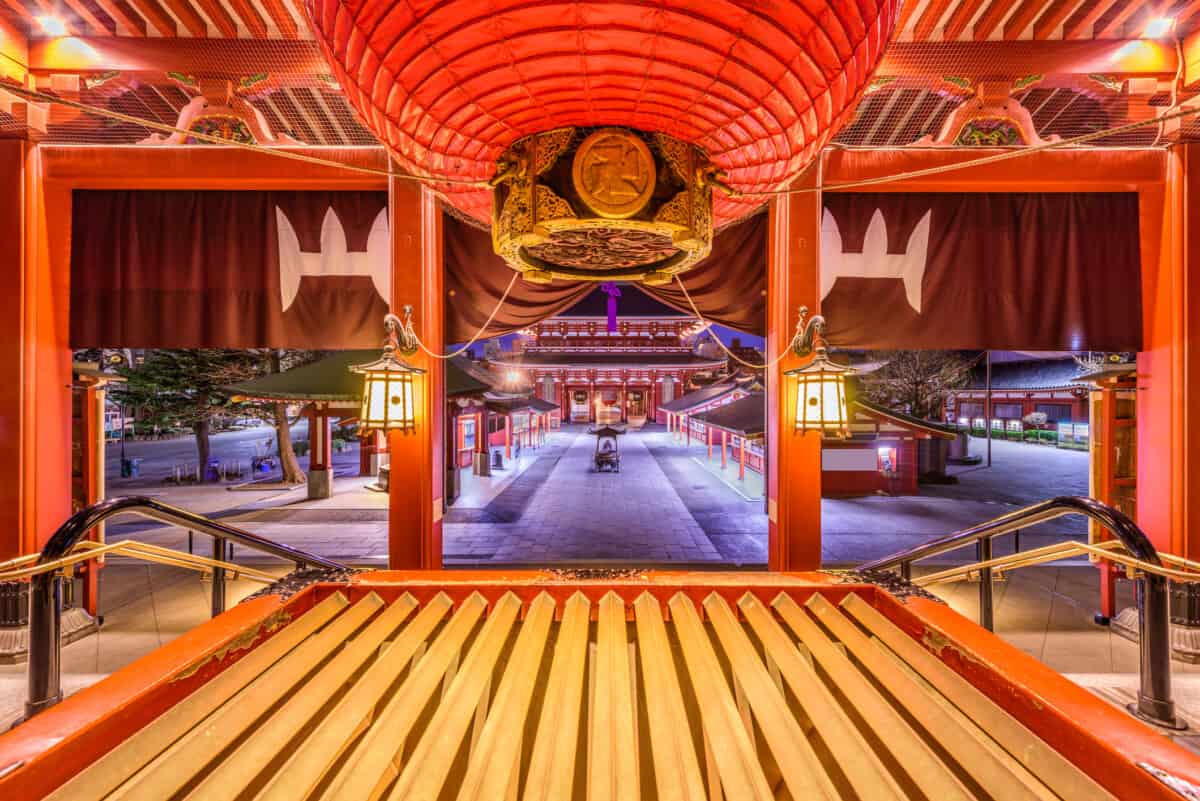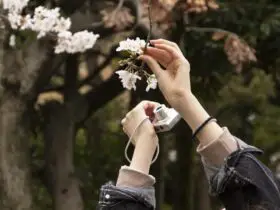Asakusa’s Sensoji Temple is a historic Buddhist temple. It is one of Tokyo’s oldest and most revered temples. Once affiliated with the Tendai Buddhist sect, after World War II, it became separate. A five-story pagoda, the Asakusa Shinto shrine, is near to the temple.
Numerous retail shops sell traditional Japanese goods, foods, and souvenirs.
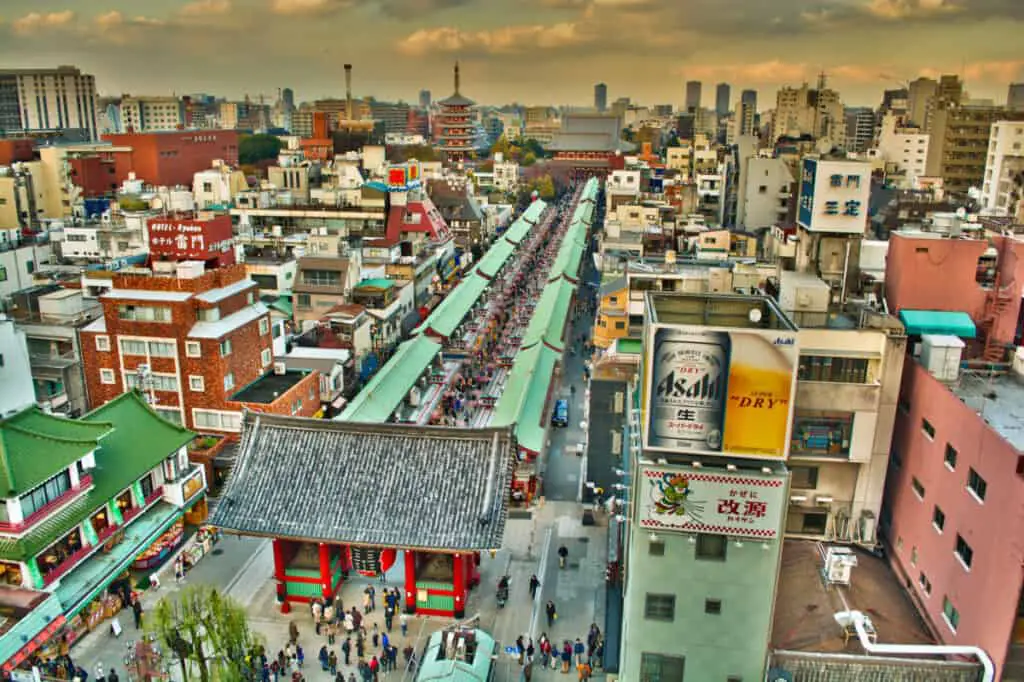
According to a legend, two fishermen, Hinokuma Hamanari and Hinokuma Takenari discovered a Kannon statue in the Sumida River about 628 AD.
Hajino Nakamoto, the village leader, recognized the statue’s significance and preserved it by converting his home into a modest temple in Asakusa so that the townspeople might worship Kannon.
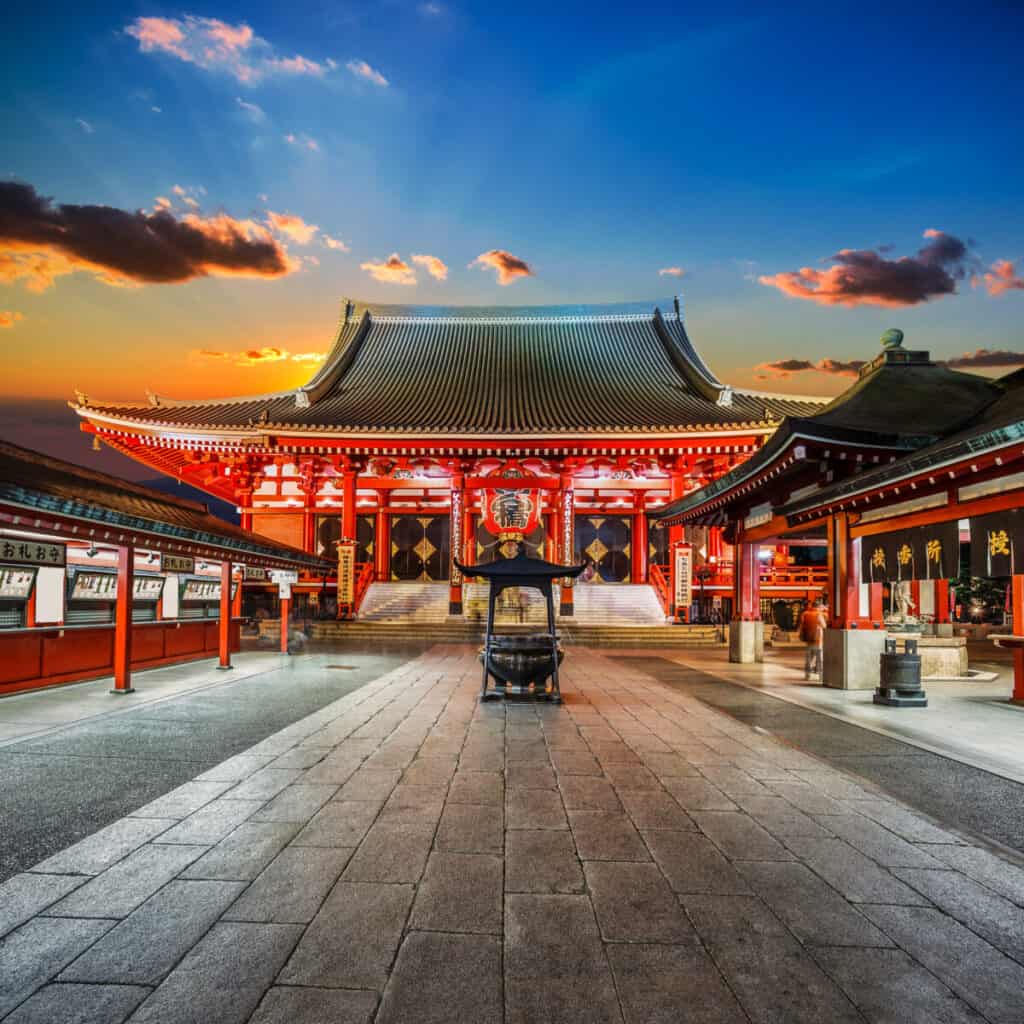
Sanja Matsuri is Tokyo’s largest and most popular festival, is held at Senso-Ji temple. This occurs in late spring over three to four days, with the surrounding streets blocked to traffic from sunrise to late night.
Sanja Matsuri Festival By ANA All Nippon Airways Video
The Kaminarimon, or “Thunder Gate,” overshadows the temple’s approach. A giant paper lantern, painted in brilliant red and black tones to represent storm clouds and lightning, adorns this towering Buddhist entrance.
Nakamise-Dori a long shop-lined walkway, is beyond the Kaminarimon entrance followed by the Hozomon, or “Treasure House Gate,” which leads to the inner area. A five-story pagoda and the main hall, dedicated to Kannon, are located inside the grounds.
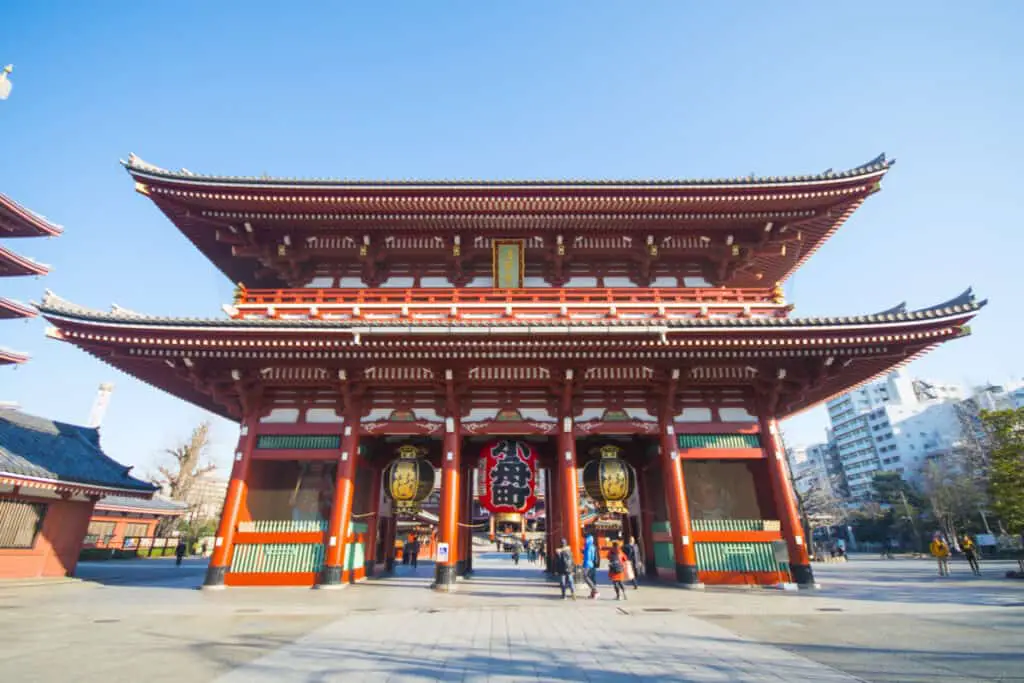
There are dozens of traditional shops and retailers beyond the thunder gate that sell traditional Japanese foods including hand-made noodles, sushi, candies, and even tempura.
The street leading from the Thunder Gate to the temple proper, Nakamise-Dori, is lined with modest shops offering souvenirs ranging from fans, woodblock prints, kimonos, Buddhist scrolls, traditional sweets, to Japanese themed toys, t-shirts, and a wide range of other items.
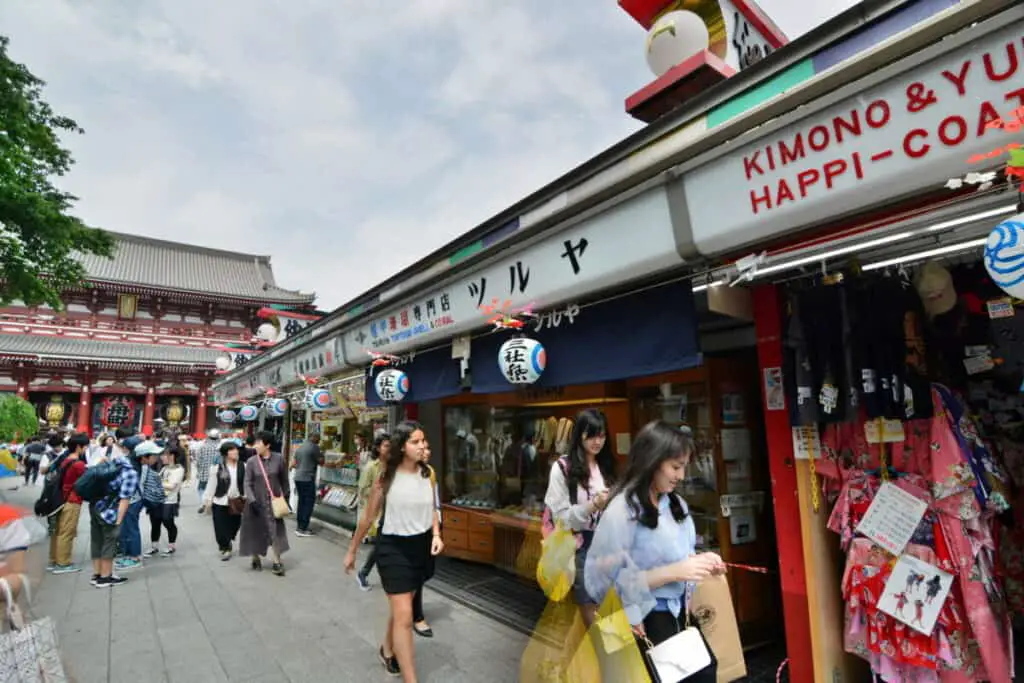
The Hozomon, or “Treasure House Gate,” is the next gate that leads into the inner temple complex. A majestic five-story pagoda and the main hall are dedicated to Kannon.
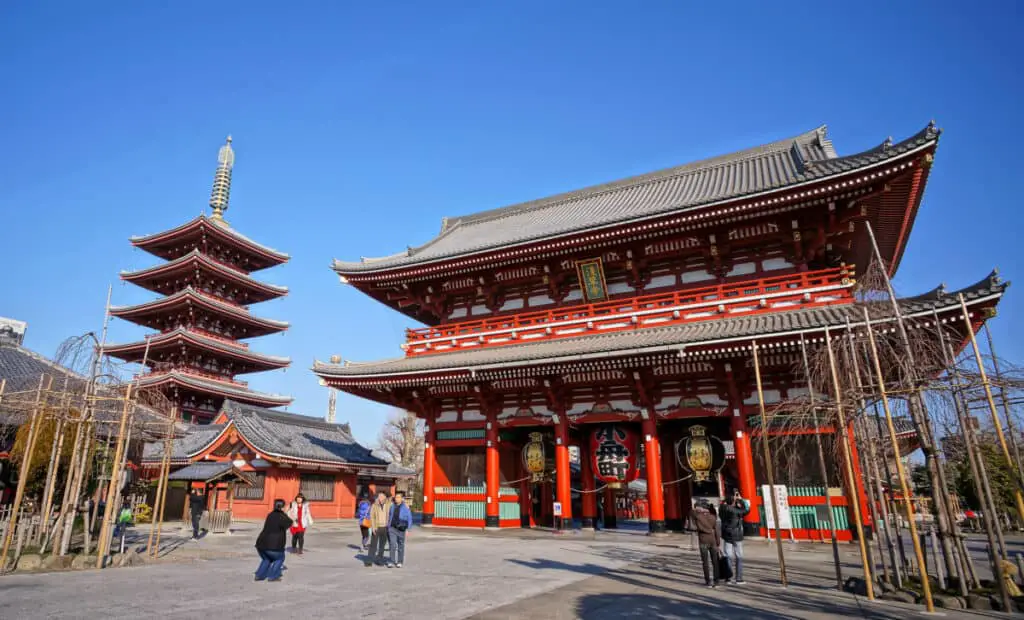
O-mikuji or fortune booths may be seen both inside the temple and along the temple’s approach. Visitors can consult the fortune papers and receive answers to their inquiries for a suggested contribution of 100 yen.
Visitors shake marked sticks from enclosed metal containers take one of the numbered sticks out and read responses from one of 100 available drawers corresponding to the sticks printed number.
Similar to fortunes found in Chinese fortune cookies each drawer has a piece of paper that has fortune pertaining to love, family, work, and overall luck.
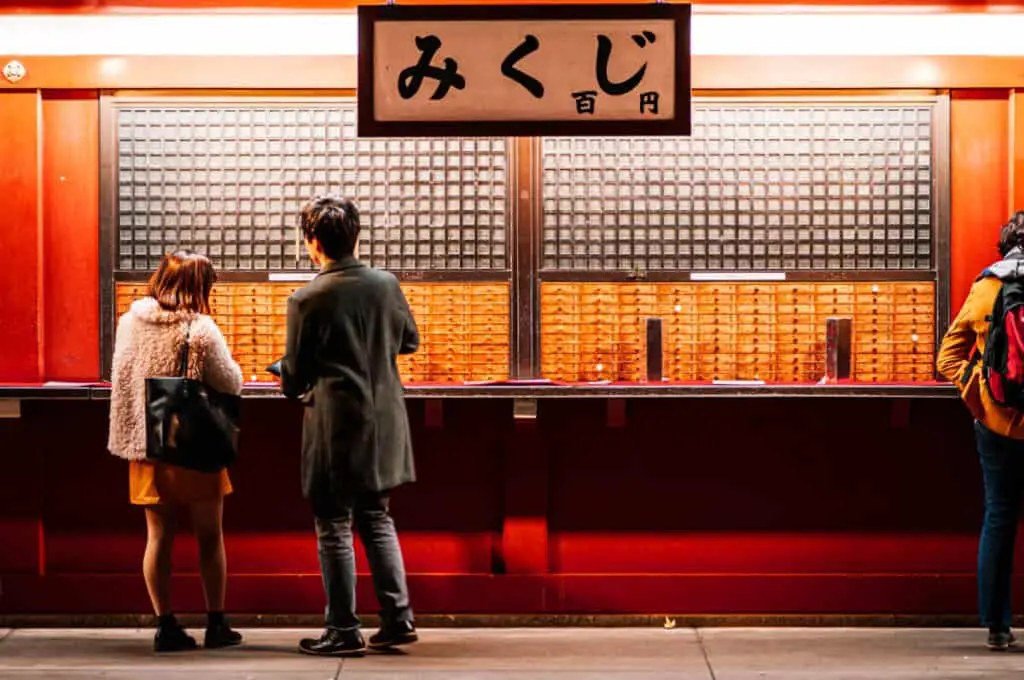
The Sensoji Kannon temple, located past these drawers, is devoted to Kannon Bosatsu, the Bodhisattva of Compassion, and is the nation’s most frequented religious destination, with over 30 million people each year.
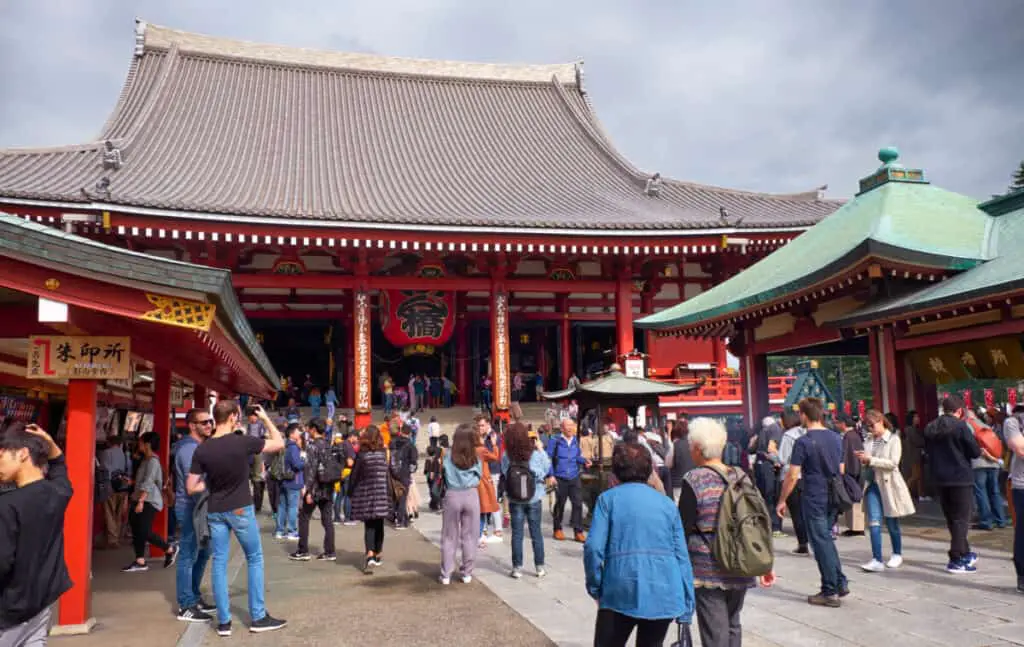
The inner area of Sensoji Kannon (photo above) temple in front of Hondo or Kannon-do, the Main temple building devoted to Kannon.
The temple itself is free of charge to visit and the hours that the main temple doors are open are 6 am to 5 pm April thru September and 6:30 am to 5 pm October thru March.
The temple area grounds can be visited any time of day or night, although shops and the entrance to the main temple are closed after hours.
The temple grounds are open year-round with no closure dates.
To the right of the main hall (about 100 feet) of the temple stands a Shinto shrine Asakusa shrine. Many tourists do not realize that within the complex grounds are both a Buddhist temple and a Shinto shrine.
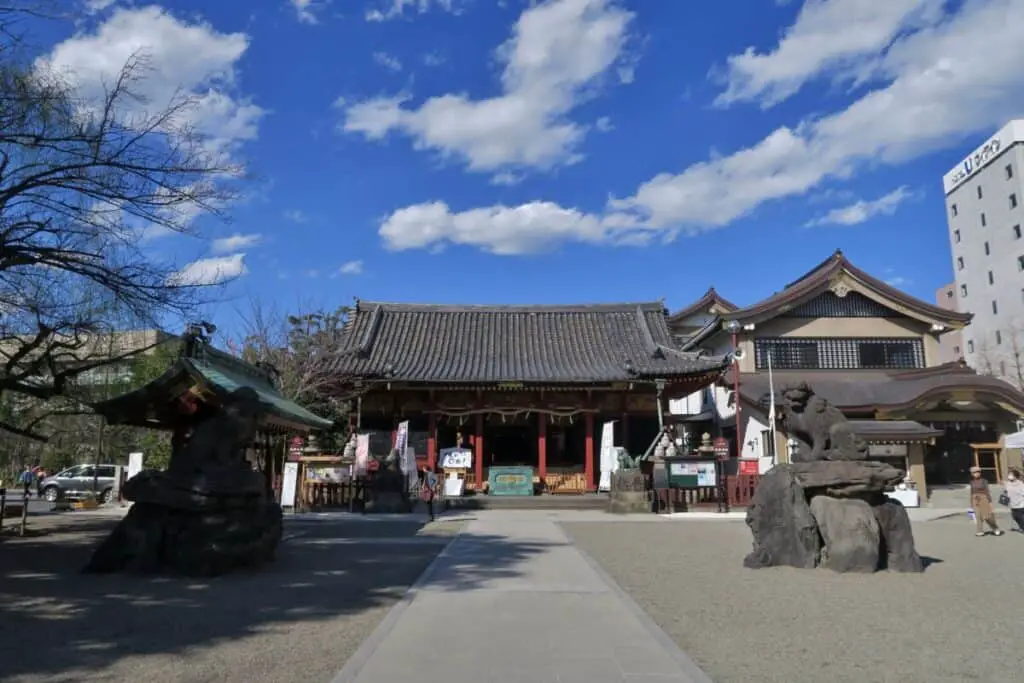
Points of interest at the Sensoji Temple
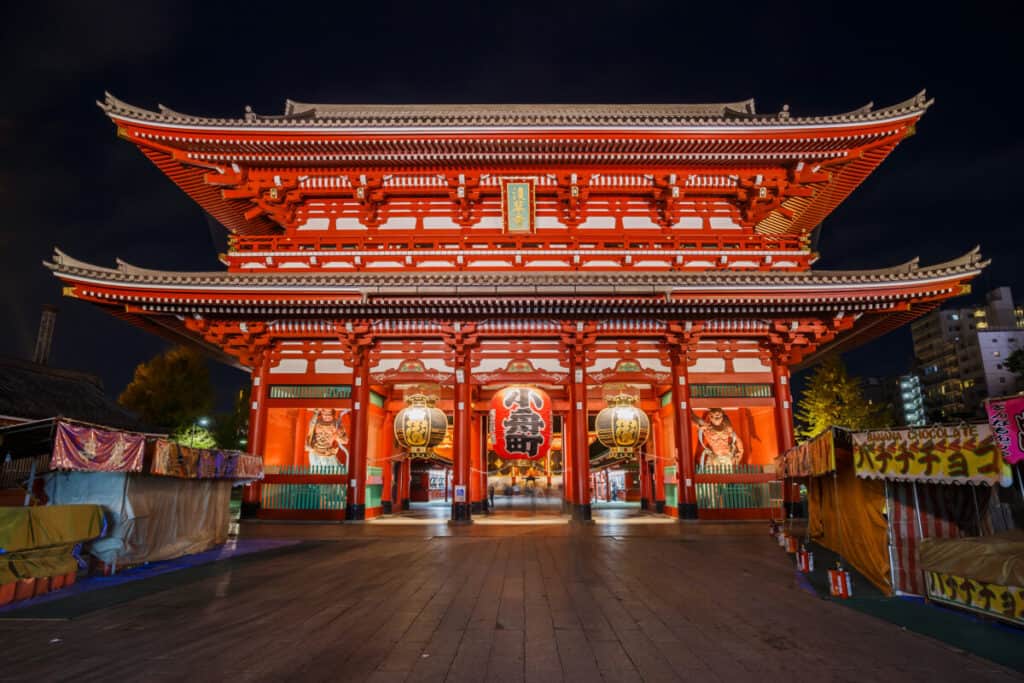
Hozo-mon Gate (commonly called Nio-mon Gate)
One of two entry gates leading to the Sensoji main hall is the Hozomon or Treasure-House Gate. Many of the artifacts of the temple are kept on the second floor of the Hozomon. Two sculptures, three lanterns, and two huge sandals decorate the main level.
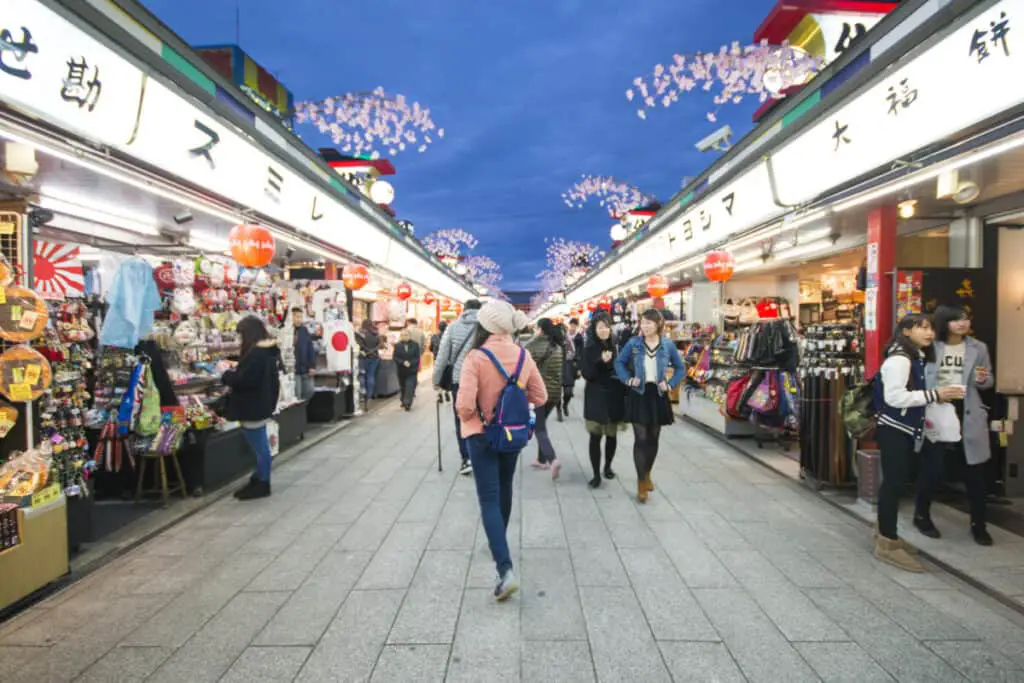
Nakamise Shopping Street
Long street found after passing thru the Hozomon gate.
This street is on temple property, thus it begins and ends with two temple gates: the outer gate of Kaminarimon is on the southern end, while the inner gate of Hozomon is on the northern end. A variety of shops may be found between these two gates. This is not the only “Nakamise” in Japan; “Nakamise” is a traditional name for commercial shops on the grounds of temples or shrines.
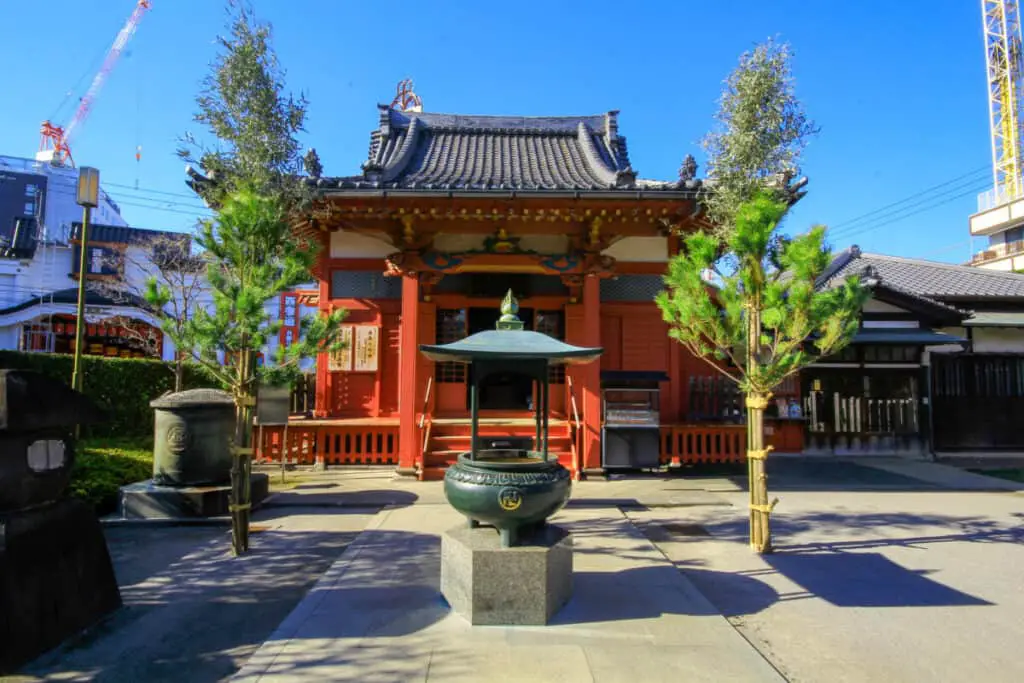
Bentendo Hall
Found to the right and behind the shopping street area.
Bentendo Hall is home to a statue of the gray-haired female goddess Sarasvati (Benzaiten), one of the Kanto region’s three notable Sarasvati (Benten) sculptures. Tokugawa Tsunayoshi ordered the Bentendo Hall to be rebuilt in 1692.
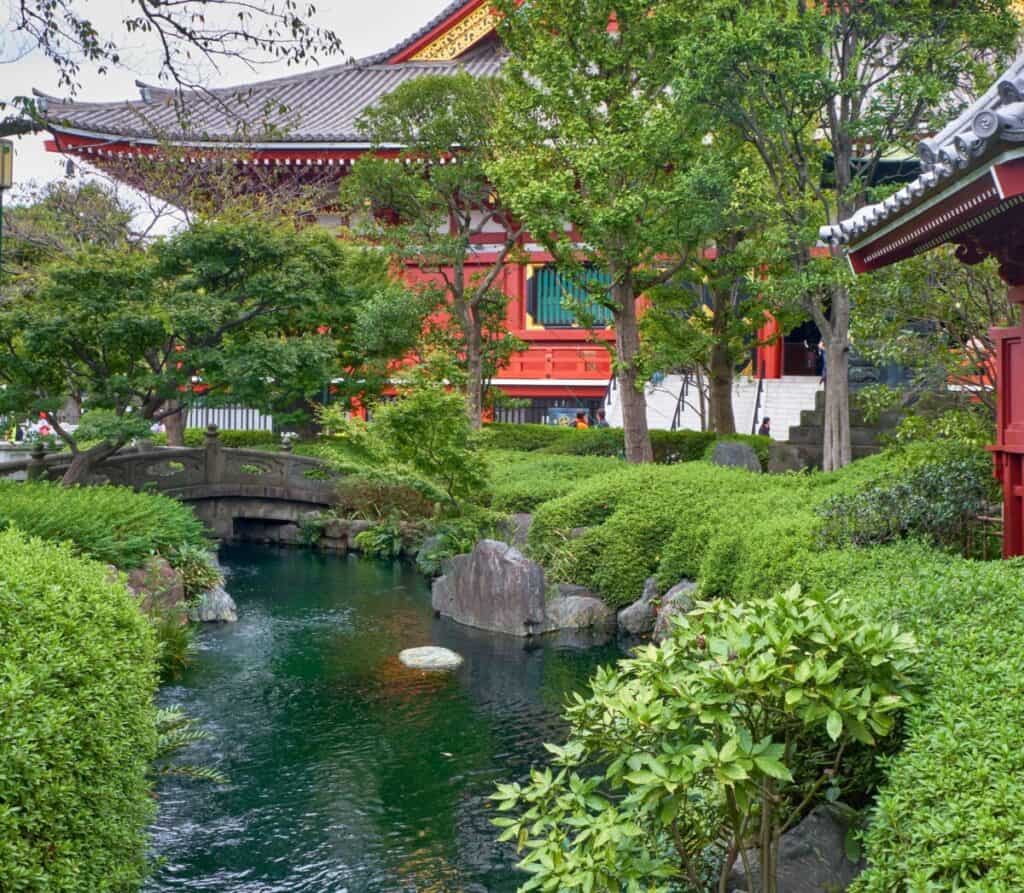
Demboin and Its Garden
Found to the left of the shopping street before reaching the thunder gate.
In Japan, the Dembo-in and its Garden have been recognized as a National place of scenic beauty. It was built in 1777 and houses Kyakuden (a structure where guests are welcomed). Only open for a few months of the year, from March until late May.
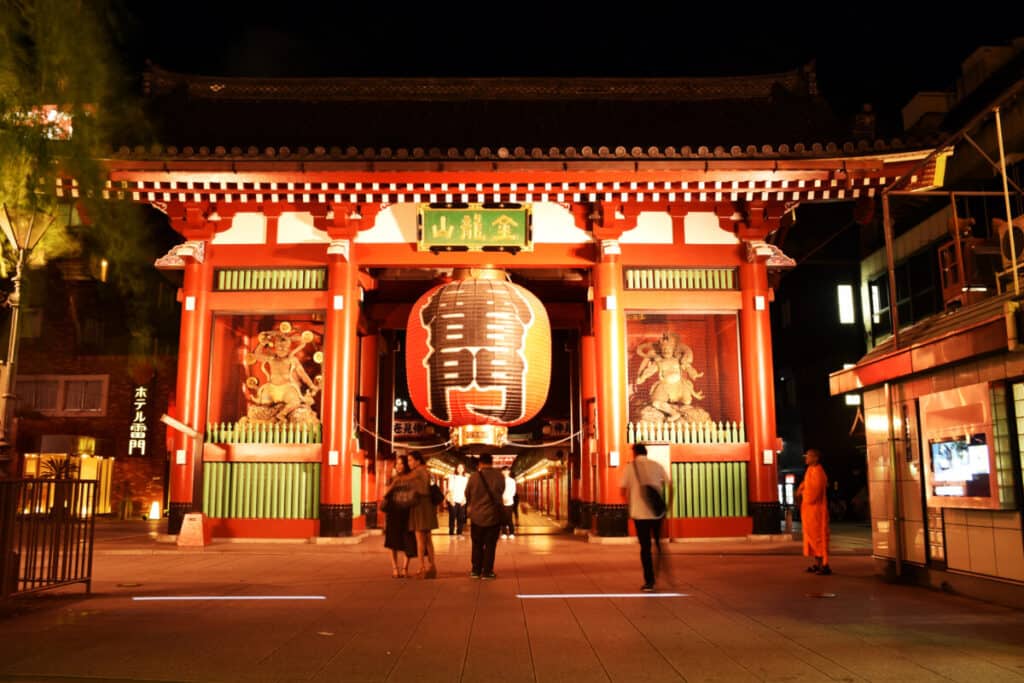
Kaminari-mon Gate (Furaijin-mon Gate)
Kaminari-mon Gate, (thunder gate) is the main gate of Senso-Ji, was constructed in 942 by military leader Taira no Kinmasa. To protect the temple from natural calamities, statues of Fujin (the deity of wind) and Raijin (the god of thunder) can be seen to the left and right of the lantern.
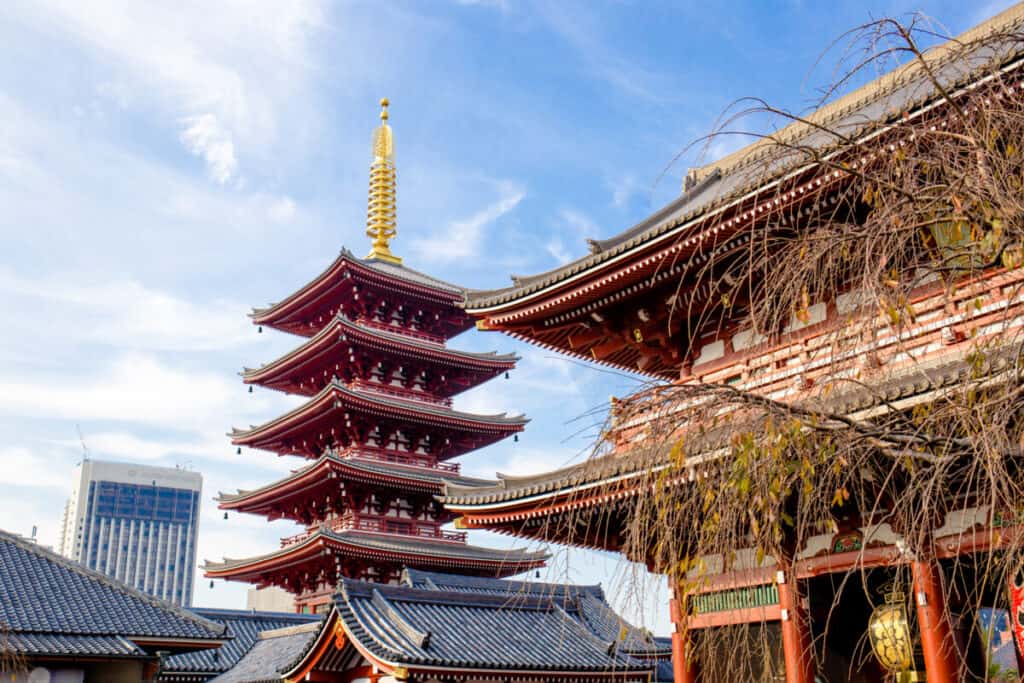
Five-Storied Pagoda
Found to the left of the main hall of Sensoji Temple
In 942, the pagoda was built for the first time. It was, however, destroyed by fire several times before being rebuilt. The present pagoda, which stands 173.8 feet tall, was erected atop the reinforced concrete base structure in 1973.
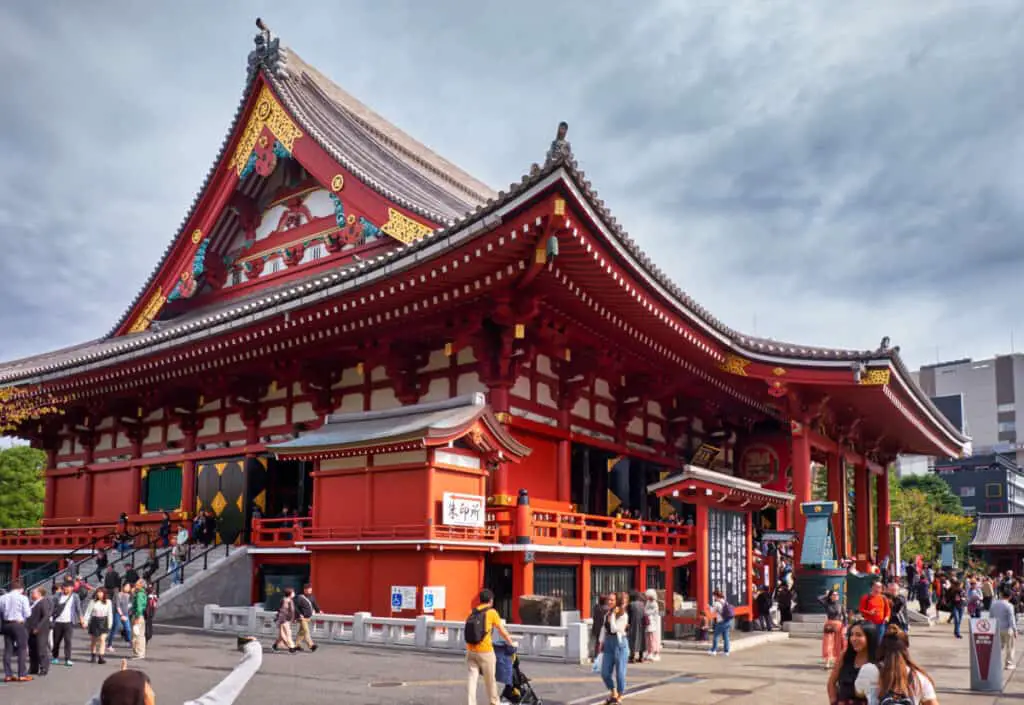
Main Hall(Kannondo Hall)
The walkway dead ends into the main hall.
The main feature of the Main Hall is its steeply sloping roof, which has an extremely steep slope in comparison to those of other temples.
The naijin (inner sanctum) and the gejin (outer sanctum) are separated in this hall (outer sanctum). The Bodhisattva Kannon, Senso-main Ji’s image, sits in a small temple in the midst of the naijin.
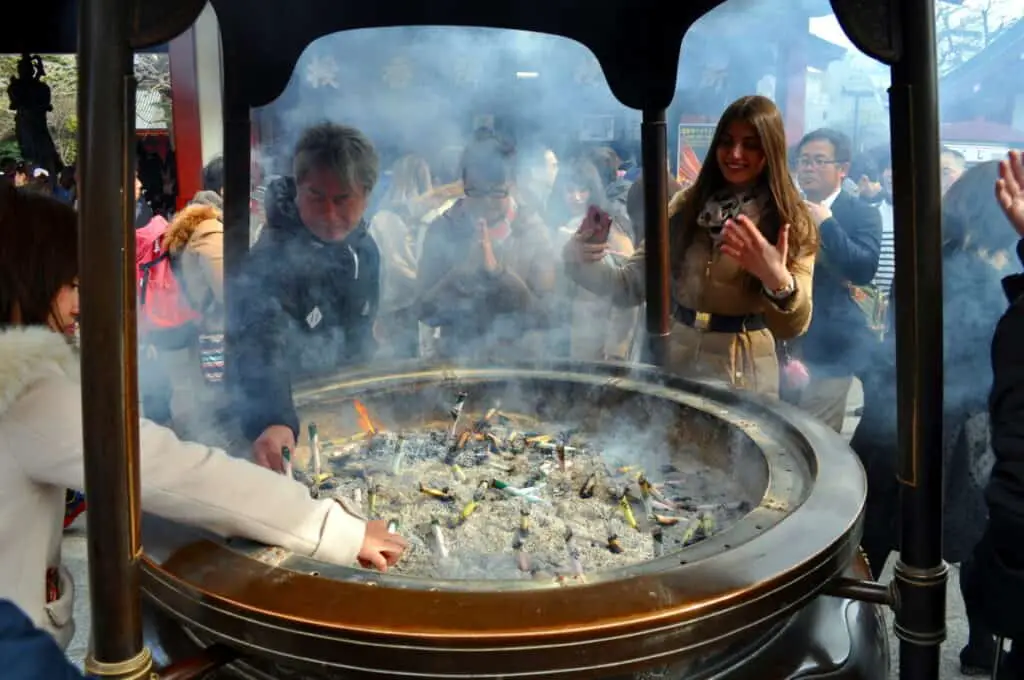
Jokoro at Sensoji Temple
The Jokoro or Jyoukouro is found directly in front of the main hall.
The smoke is produced by a huge earthenware vessel known as Jokoro. This huge incense burner emits a cloud of smoke. The incense may be obtained at a local shop just before reaching the main hall courtyard. It is claimed that burning incense and wafting the smoke towards oneself is said to remove negative energy.
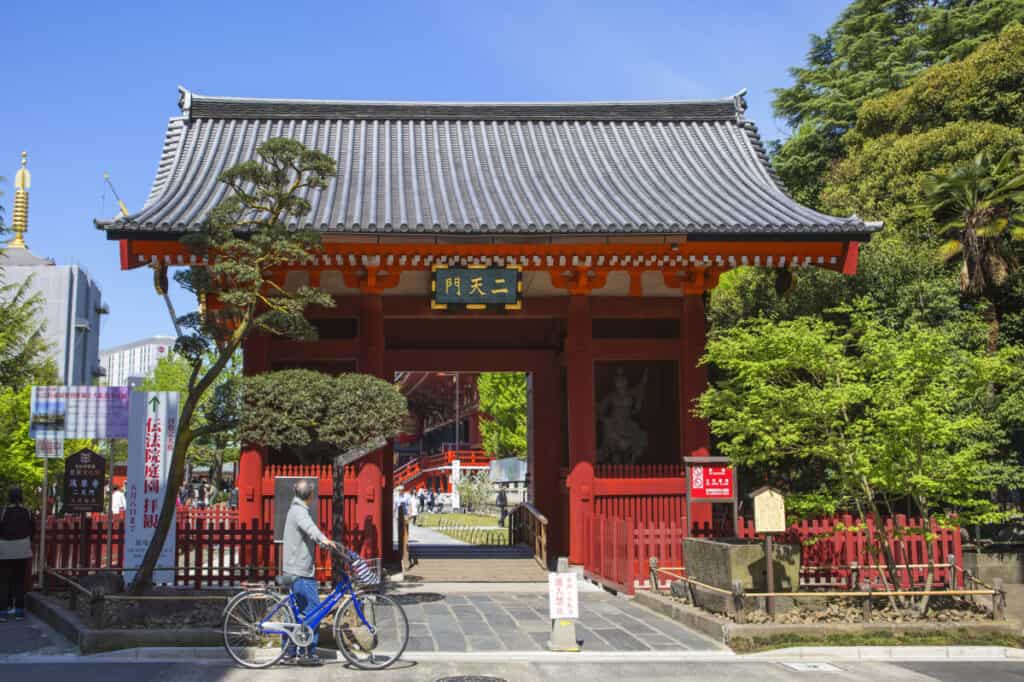
Niten-mon Gate
When facing the main hall the Niten-mon gate is to your right.
The East Gate of Senso-ji was constructed around 1649. After hundreds of years of repairs, the gate was restored to its original state in 2010. On the left and right sides of the gate are two protecting Buddhist deities (“Ten”) named Zochoten and Jikokuten. In Japanese, “Niten-mon” means “gate of the two Ten.”
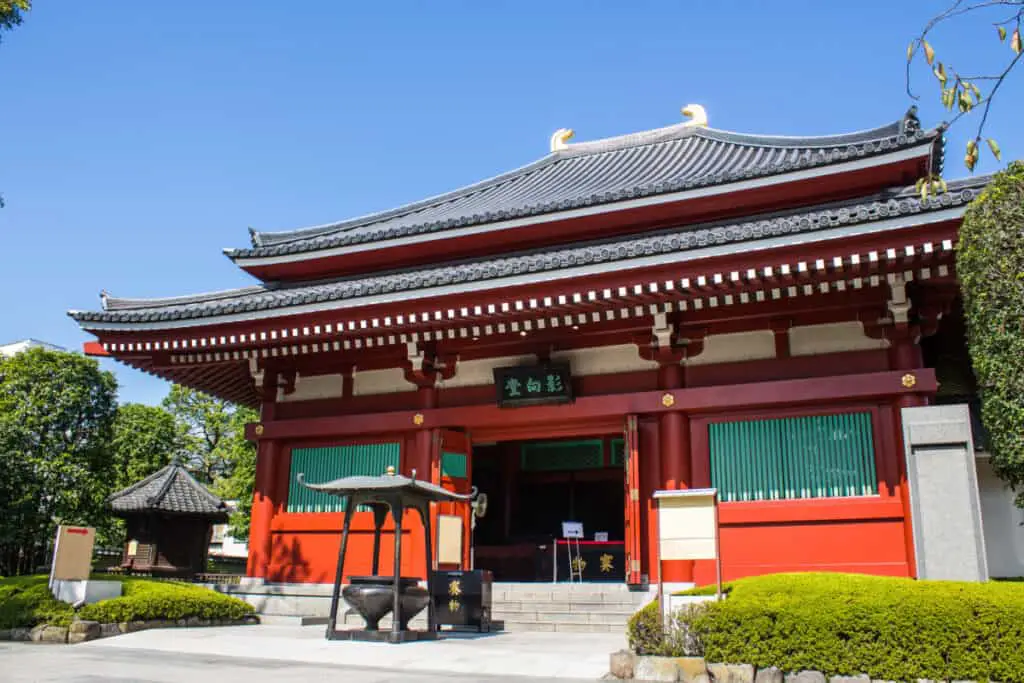
Yogodo Hall
To the left and slightly behind the main hall is Yogodo hall.
Yogodo Hall is home to eight enshrined Buddhas, each of whom guards one or two Chinese zodiac animals. Each year of the 12-year cycle is symbolized by an animal in the Chinese zodiac.
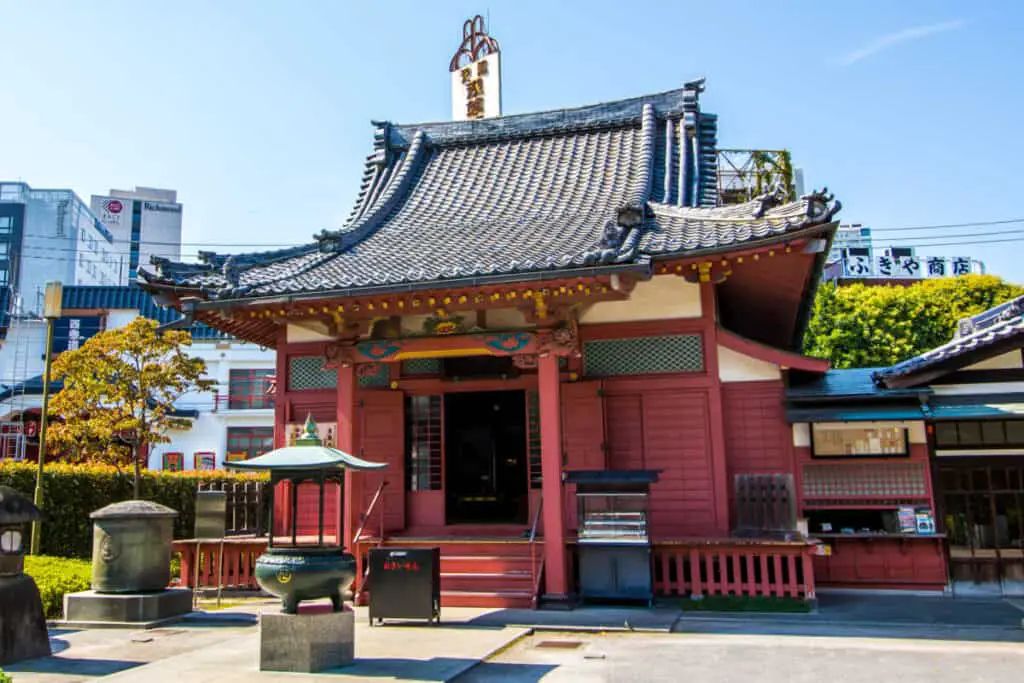
Awashimado Hall
Immediately left of Yogodo hall
Awashima Myojin, a deity brought from the mother shrine in Kada, Wakayama Prefecture, was enshrined during the Genroku Period (1688-1704). Amitabha’s main picture is in the center, with Awashima Myojin and Kokuzo Bosatsu on the left and right.
Annual events and holidays in and around Sensoji Temple
- January 1-7 Hatsumode (First Temple Visite of the Year)
- Setsubun (Spring Celebration) February 3
- Honzon Jigen-e (Celebrating the Appearance of the Bodhisattva Kannon) March 18
- Hana Matsuri (Celebration of Buddha’s Birthday) April 18
- Shiman-rokusen-nichi (Day Worth 46,000 Visits) July 9-10
- Osame-no-Kannon Goennichi (Last Festival of the Year) December 17-19
Sensoji Temple Official Website (English)

